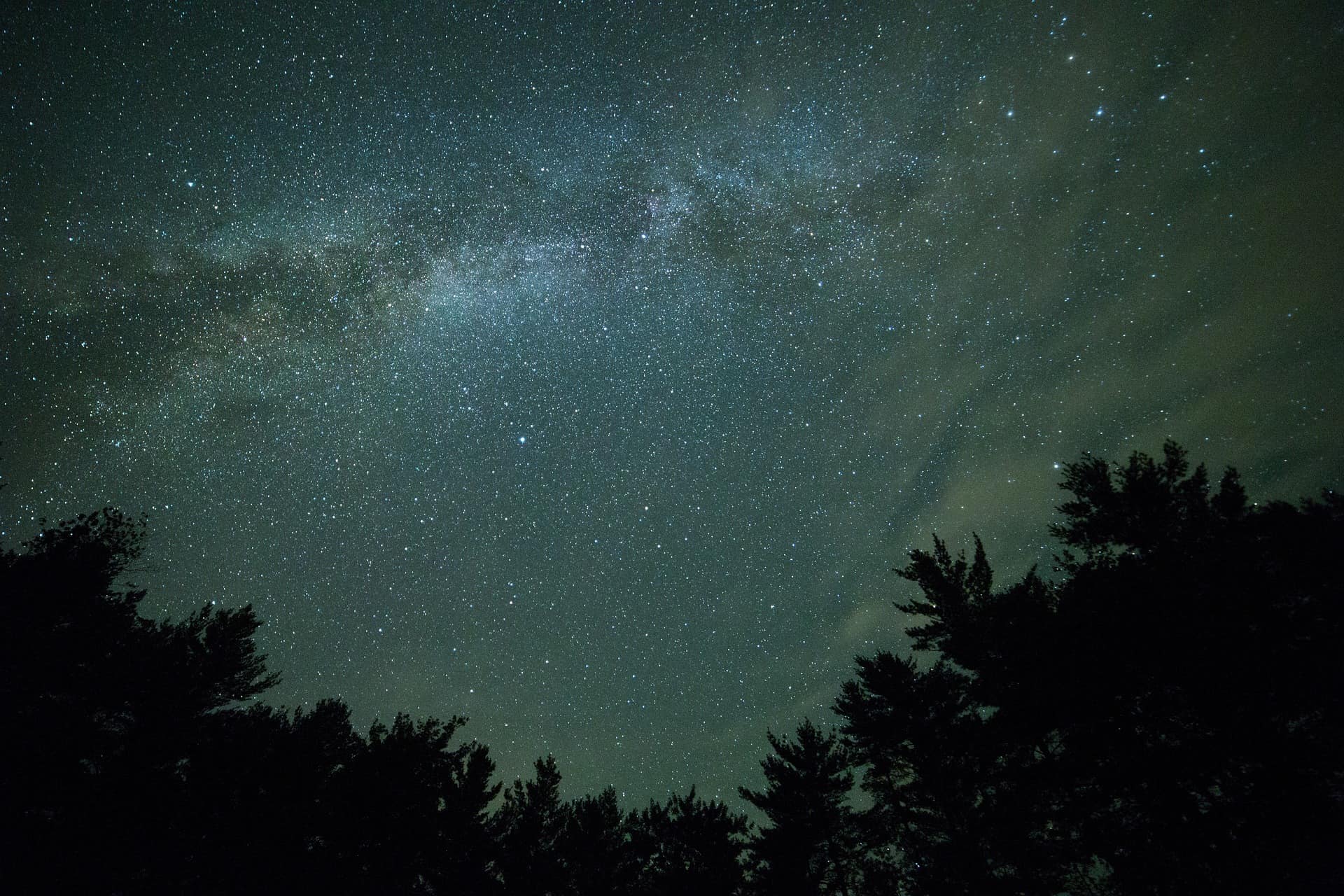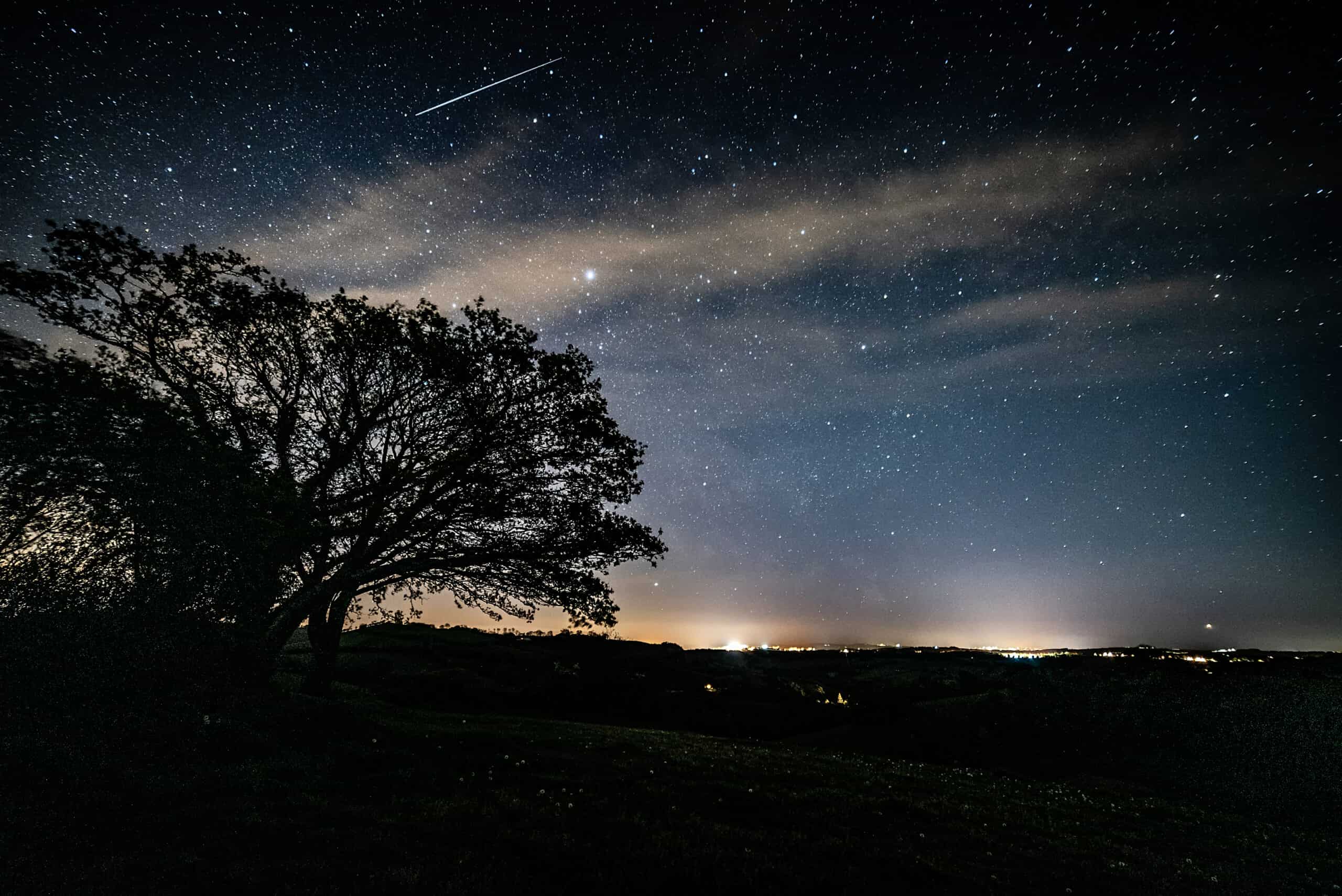Dark Sky and Garden Lighting Design
Consider the importance and value of darkness and what your garden lighting design can do to safeguard its future in your garden landscape.

What is 'Dark Sky'?
Dark sky, apart from being a rather good weather application, refers in this context, to the Dark Sky Initiative (https://www.darksky.org/), and their mission to protect the night sky from unnecessary, excessive and harmful artificial use of lighting against the dark night’s sky. Hine Garden Design support their message and at every turn work towards the most sustainable and responsible lighting design for your garden.
What harm does artifical light do?
Light in the dark reduces the options for prey to evade predators. Artifical light disrupts insect movement, causing fatal attraction for some that then predated with ease. Animals that use the moon and starlight to navigate or hunt can be drawn off course by the light emitted by our towns and cities. Reflection and glare cause further disruption.
The introduction of artifical light probably represents the most drastic change humans have made to their [nocturnal animals] enviornment- Christopher Kyba- research scientist
Artifical light at night affects the circadian rhythms of all life including humans. This means that our body, which responds to the 24hour cycle of day turning into night, is negatively effected when that cycle is disrupted- it can have significant and multitude effects for us. The ability to see the night sky in your garden or urban landscape is a joy fewer people are able to enjoy in the modern world. This for me will always be a sincere loss, I have spent many an evening basking in their gaze, but quite apart from me missing those moments, there is no denying the exploration and art that has come from looking up at night and seeing the great collection of stars above us looking back. Aspirations to visit them, art that portrays them, literature that conveys and communicates both. Without the history of star gazing I wonder who we would be today.

This is a stripped back explination of the challenges presented by artifical light at night, find more details on the Dark Sky Initiative website (https://www.darksky.org/) and others. However, what is clear is that we should try at all times to be as responsible as possible with our use of lighting outside at night- and that, includes our gardens.
So, how can you use light responsibly in your own garden space?

No.1 Colour Temperature
No. 2 Lighting Zones and the off switch
Zone your lights and turn them off when not in use. I know, it sounds simple, and that’s the good news- it is. Turn off the light when you aren’t using them. The darkness is good for you, your bank balance and the greater eco system.
No. 3 Consider what it is you are lighting
What the light focus is. Lighting downwards of course reduces light spill compared to lighting upwards and into the sky. If you are using ‘up-lighters’, consider for deciduous plants for example (those that loose their leaves in the winter), lighting them in the winter will be different to the summer- perhaps it may not be nessisary at all to light them in the winter- if you have dimmer control or programmable lighting looks, perhaps reduce the intensity in the winter, if this is an easily accessible lighting fixture, re focus the light for the season so that it is focussed on a solid object for that time of year adding real dynamics to your garden lighting design.

That’s it. Three steps to more responsible and a healthier garden lighting experience for you and the wider planet. Lighting can bring a whole new dynamic to your investment in your garden space- a true crowning jewel.
Doing responsibility is our passion.- Amber Hine
Landscape & Garden Designer, Hine Garden Design.
